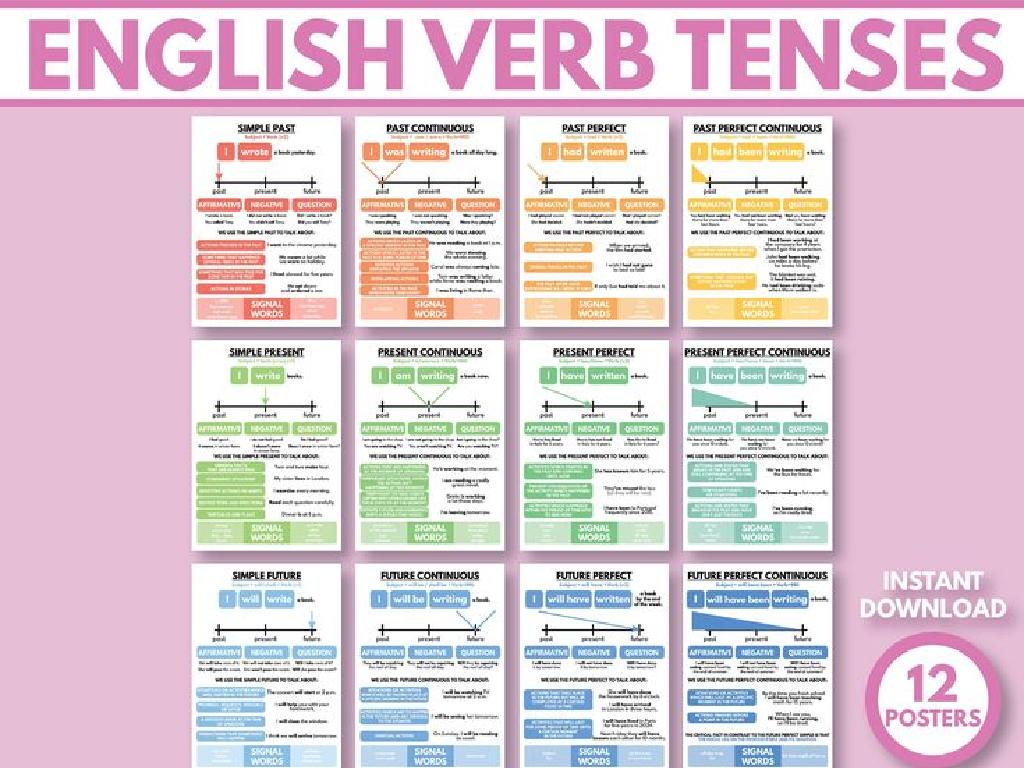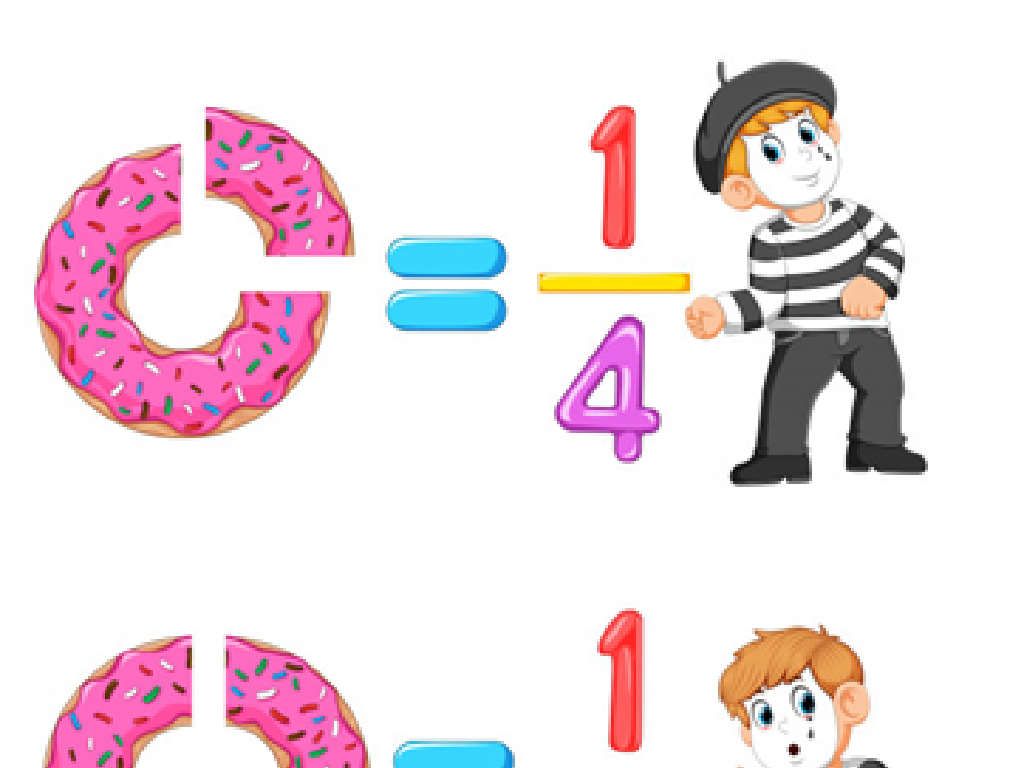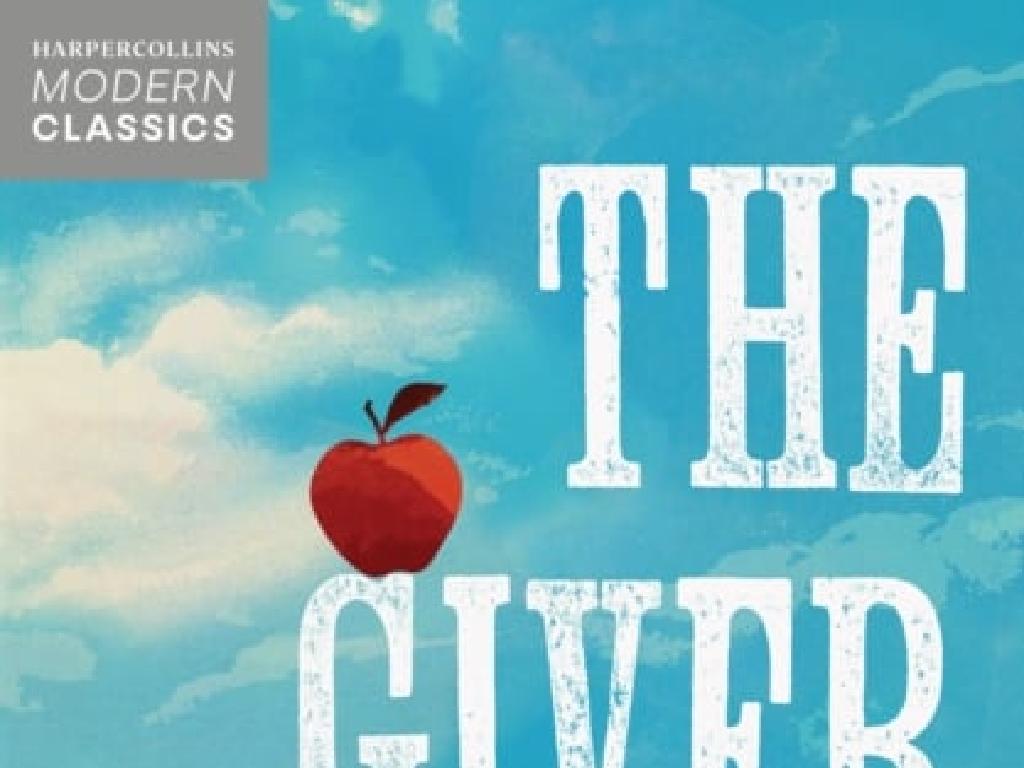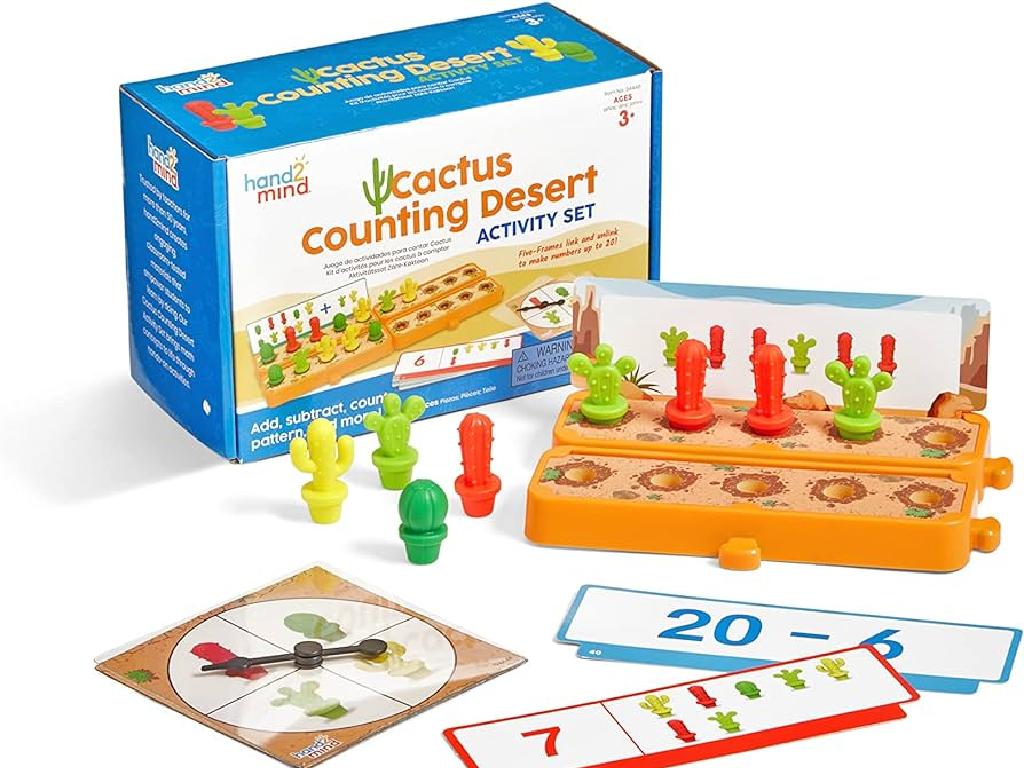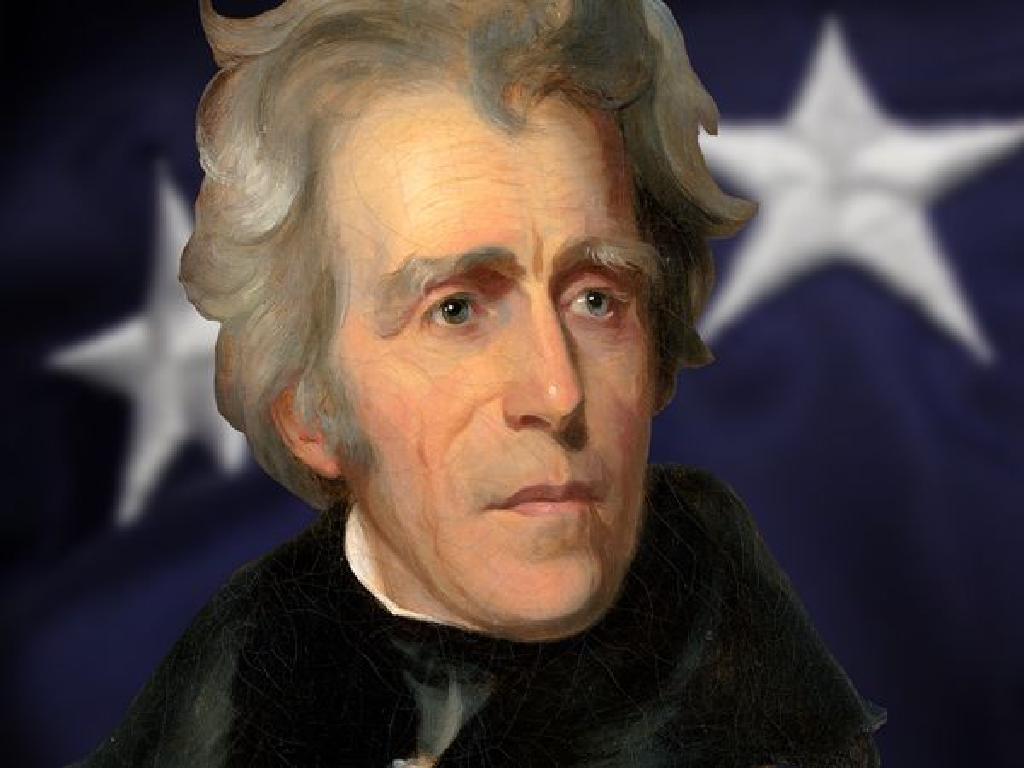Same
Subject: Math
Grade: Kindergarten
Topic: Same And Different
Please LOG IN to download the presentation. Access is available to registered users only.
View More Content
Learning About ‘Same’
– What does ‘same’ mean?
– ‘Same’ means two things are alike.
– ‘Same’ in math and life
– Knowing ‘same’ helps count and sort.
– Spotting similarities
– Look for objects that look alike.
– Fun games to find ‘same’
– We’ll play matching and sorting games.
|
Introduce the concept of ‘same’ by explaining that it means two or more things are exactly alike. Discuss how recognizing similarities is useful in everyday life and in math, such as when counting or sorting objects. Engage the students with interactive games where they can practice spotting items that are the same, like matching shapes or colors. This will help them understand the concept in a fun and memorable way. Encourage the children to share examples of things that are the same and praise their efforts to build confidence.
What Does ‘Same’ Mean?
– ‘Same’ means exactly alike
– Two things that are identical in appearance or quantity
– Same look or same number
– Like two red apples or five fingers on each hand
– Find same things in class
– Look around to spot items that match
– Sharing our same findings
|
This slide introduces the concept of ‘same’ to Kindergarten students by explaining that it refers to objects that are identical in look or quantity. Use relatable examples like identical fruits or counting fingers to illustrate the point. Encourage the students to observe their surroundings and find objects that are the same. This activity will help them understand the concept of sameness through practical observation and interaction. After the activity, ask the students to share what they found with the class to reinforce their understanding and allow them to learn from each other’s observations.
Finding the Same Shapes
– Learn about matching shapes
– Shapes that look exactly alike are matches
– Use colors to find pairs
– Same color shapes are easier to match
– Point out matching shapes
– Can you find two circles or two squares?
|
This slide is aimed at helping Kindergarten students recognize and match identical shapes, reinforcing their understanding of geometry and visual discrimination. Start by explaining that some shapes in a group will look exactly the same, and these are the ones that match. Introduce the concept using colorful shapes to make it easier for the children to differentiate and match. Encourage the students to actively participate by pointing out pairs of matching shapes. This can be turned into a fun classroom activity where students can work individually or in groups to find and match shapes. Provide a variety of shapes and colors to ensure that all students are engaged and challenged according to their level.
Matching Same Colors
– Colors can be identical
– Match crayons by color
– Pick two crayons and see if they are the same
– Find the most color pairs
– Keep count of your color pairs
– Ready, set, go find!
|
This slide introduces the concept of sameness through a fun and interactive crayon matching activity. Encourage the children to observe the colors carefully and find two crayons that are exactly the same shade. This will help develop their ability to recognize and match colors, an important skill in early math learning. Keep the activity light-hearted and turn it into a game to see who can find the most pairs. Remember to celebrate every match the children find to build their confidence and enjoyment in learning.
Counting Objects That Are the Same
– Count objects in groups
– Find groups with same numbers
– Look for groups with equal items
– Same numbers help with math
– Understanding ‘same’ aids addition and subtraction
– Practice counting together
|
This slide is aimed at helping Kindergarten students recognize and count objects that are the same. Start by explaining that objects can be grouped and counted. Use visual aids with different groups of objects and count them together as a class to identify which groups have the same number of items. Highlight how recognizing sameness is a foundational skill for understanding addition and subtraction, as it involves grouping equal sets. Encourage students to practice by counting items in the classroom or at home, reinforcing the concept of ‘same’. This activity will also enhance their number recognition and counting skills.
Class Activity: Same Pairs Game
– Let’s play the Same Pairs Game
– You’ll receive cards with pictures
– Find the matching picture pairs
– Cards that match look exactly alike
|
This activity is designed to help Kindergarten students recognize and match identical items, reinforcing the concept of ‘sameness’. Distribute an even number of picture cards to each student. Instruct them to find and pair up cards with identical images. This game enhances visual discrimination skills and memory. For variation, use cards with different color pairs, shape pairs, or number pairs. Ensure that each student understands the matching criteria and provide assistance as needed. After the game, discuss with the class why the pairs matched and explore the concept of identical objects in more detail.
Celebrating Similarities
– Great job on finding sameness!
– Understanding ‘same’ is key in math
– ‘Same’ helps in sorting and matching objects
– Applaud yourselves for learning!
– Keep observing things that are the same
– Practice by pairing socks or sorting toys
|
This slide is meant to wrap up the lesson on identifying similarities and understanding the concept of ‘same.’ It’s important to reinforce the idea that recognizing when objects or shapes are the same is a foundational math skill, which will be used in future topics such as sorting, classifying, and creating patterns. Encourage the children to celebrate their achievement with a round of applause, fostering a positive learning environment. Remind them to continue practicing this skill in their daily activities, like when they are playing with toys or helping with laundry, to further solidify their understanding.

